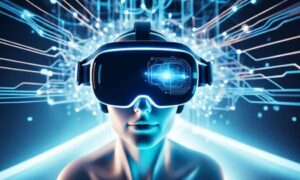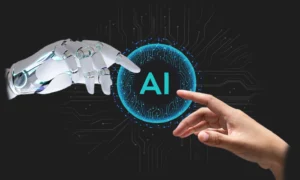Introduction:
In the ever-evolving landscape of technology, computer programming stands as the backbone of innovation. Whether you’re a beginner taking your first steps into the coding realm or an experienced developer seeking to expand your skill set, this comprehensive guide aims to navigate you through the world of computer programming. From understanding the fundamentals to exploring advanced concepts, let’s embark on a journey that demystifies the art and science of coding.
The Essence of Computer Programming:
At its core, computer programming is the process of creating a set of instructions that tell a computer how to perform a task. These instructions, often written in a programming language, serve as a bridge between human logic and machine execution. The ability to code empowers individuals to create software, develop applications, and solve complex problems.
Transition:
Before diving into coding languages, let’s explore the fundamental concepts that form the basis of computer programming.
Fundamental Concepts:
a. Variables and Data Types:
In programming, variables act as containers for storing data. Understanding data types, such as integers, floats, and strings, is crucial. Variables and data types lay the foundation for creating dynamic and flexible programs.
b. Control Structures:
Control structures, including loops and conditional statements, enable programmers to control the flow of a program. Loops iterate through a set of instructions, while conditional statements introduce decision-making capabilities, allowing code to execute based on specific conditions.
Transition:
Now that we’ve covered the basics, let’s delve into the various programming languages available and their unique attributes.
Programming Languages:
Choosing Your Arsenal:
a. Python:
Renowned for its readability and versatility, Python is a beginner-friendly language that has gained popularity across various domains. Its syntax allows for concise and expressive code, making it an excellent choice for both beginners and experienced developers.
b. JavaScript:
As the backbone of web development, JavaScript enables the creation of interactive and dynamic web pages. Its versatility extends beyond browsers, with the rise of server-side JavaScript frameworks like Node.js.
c. Java:
Known for its platform independence, Java is widely used in building scalable and reliable applications. It follows the “write once, run anywhere” philosophy, making it suitable for a diverse range of platforms.
d. C++:
With a strong emphasis on performance, C++ is a powerful language often used in game development, system programming, and applications where efficiency is crucial. Its close-to-the-hardware capabilities make it a staple in the programming world.
Transition:
Beyond language selection, understanding the importance of problem-solving and algorithmic thinking is essential for any programmer.
Problem-Solving and Algorithmic Thinking:
a. Breaking Down Problems:
Successful programmers excel in breaking down complex problems into smaller, more manageable parts. This approach, known as decomposition, allows for a systematic and organized solution-building process.
b. Algorithmic Thinking:
Algorithms are step-by-step procedures or formulas for solving problems. Developing algorithmic thinking involves creating efficient, logical sequences of instructions to tackle a specific problem. This skill is fundamental in writing clean and optimized code.
Transition:
Moving beyond the basics, let’s explore the importance of version control and collaboration in the programming workflow.
Version Control and Collaboration:
a. Git and GitHub:
Version control systems like Git enable developers to track changes in their code, collaborate with others seamlessly, and revert to previous versions if needed. GitHub, a platform built on Git, fosters collaboration by providing a centralized hub for project management and code sharing.
b. Collaborative Tools:
Collaboration is a key aspect of programming. Tools like Slack, Jira, and Trello facilitate communication, project management, and issue tracking, creating an efficient and collaborative workflow.
Transition:
Continuous learning is inherent in the programming journey. Let’s explore resources and best practices for staying updated and growing as a programmer.
Continuous Learning and Growth:
a. Online Learning Platforms:
Platforms like Codecademy, Udacity, and Coursera offer courses catering to all skill levels. These platforms provide interactive learning experiences, allowing individuals to practice coding in real-time.
b. Open Source Contributions:
Engaging in open source projects is an excellent way to apply and expand programming skills. Contributing to existing projects not only enhances proficiency but also provides exposure to real-world coding scenarios.
Transition:
The future of programming is dynamic and ever-changing. Let’s explore emerging trends that are shaping the future of this field.
Emerging Trends in Programming:
a. Artificial Intelligence (AI) and Machine Learning (ML):
The integration of AI and ML in programming is transforming industries. Programming skills in languages like Python are increasingly in demand for developing AI applications, data analysis, and creating intelligent systems.
b. Blockchain Development:
As blockchain technology gains prominence, programmers with expertise in languages like Solidity are sought after. Blockchain developers contribute to building decentralized applications and ensuring the security of blockchain networks.
c. DevOps Practices:
DevOps, emphasizing collaboration between development and operations teams, is becoming integral in software development. Knowledge of tools like Docker, Jenkins, and Kubernetes is valuable for streamlining the development and deployment lifecycle.
Conclusion:
Navigating the world of computer programming is a journey filled with discovery, challenges, and continuous growth. From grasping fundamental concepts to choosing programming languages, developing problem-solving skills, and embracing collaboration, each step contributes to the evolution of a proficient programmer. As technology advances, staying updated with emerging trends, participating in open source communities, and adopting a mindset of continuous learning become essential. The future of programming is not just about code; it’s about creating solutions, embracing innovation, and contributing to the ever-expanding world of technology. Whether you’re a novice or an experienced coder, the world of computer programming welcomes individuals ready to embark on a journey of creativity, problem-solving, and limitless possibilities.

































